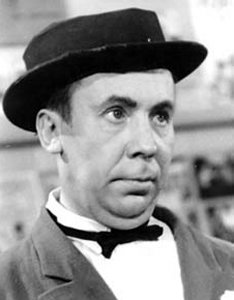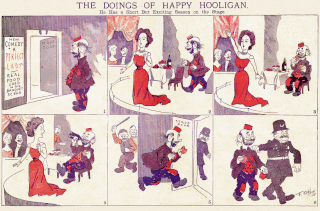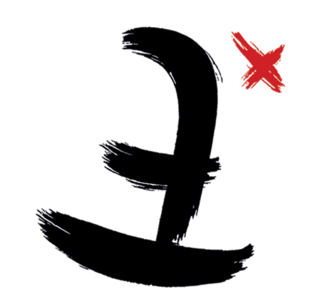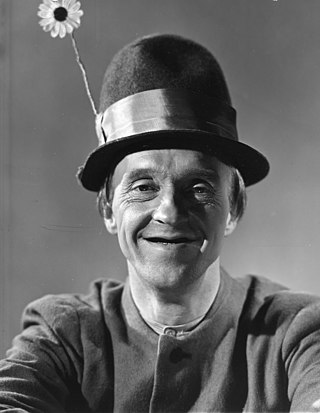A comic strip is a sequence of cartoons, arranged in interrelated panels to display brief humor or form a narrative, often serialized, with text in balloons and captions. Traditionally, throughout the 20th and into the 21st century, these have been published in newspapers and magazines, with daily horizontal strips printed in black-and-white in newspapers, while Sunday papers offered longer sequences in special color comics sections. With the advent of the internet, online comic strips began to appear as webcomics.
A cartoon is a type of visual art that is typically drawn, frequently animated, in an unrealistic or semi-realistic style. The specific meaning has evolved, but the modern usage usually refers to either: an image or series of images intended for satire, caricature, or humor; or a motion picture that relies on a sequence of illustrations for its animation. Someone who creates cartoons in the first sense is called a cartoonist, and in the second sense they are usually called an animator.

Red Meat is a three panel black-and-white comic strip by Max Cannon. First published in 1989, it has appeared in over 80 newspapers, mainly alternative weeklies and college papers in the United States and in other countries. It has been available online since November 1996.

Magic words are phrases used in fantasy fiction or by stage magicians. Frequently such words are presented as being part of a divine, adamic, or other secret or empowered language. Certain comic book heroes use magic words to activate their powers. Magic words are also used as Easter eggs or cheats in computer games, other software, and operating systems.

Speech balloons are a graphic convention used most commonly in comic books, comics, and cartoons to allow words to be understood as representing a character's speech or thoughts. A formal distinction is often made between the balloon that indicates speech and the one that indicates thoughts; the balloon that conveys thoughts is often referred to as a thought bubble or conversation cloud.

Petri Hiltunen is a Finnish cartoonist and illustrator. Hiltunen has produced work in a variety of genres, but is most notable for his fantasy and horror work. He has won the prestigious Puupäähattu award in 2002, which is regarded as the highest honour for Finnish comic artists. He is also a well-known figure in Finnish science fiction fandom and a regular panelist and guest of honour at conventions, such as Finncon.
Pekka and Pätkä is the name of several comedy films produced by Suomen Filmiteollisuus in the 1950s in Finland, based on the popular Finnish comic characters Pekka Puupää and Pätkä, who can be said to be the Finnish version of Stan and Ollie.

Martti "Masa" Elis Niemi was a Finnish actor, comedian, musician and entertainer. He is best known from his role as Pätkä in the Pekka and Pätkä films.

Rubrique-à-Brac is a humorous comic strip series created in 1968-1972 by Gotlib. The title is a portmanteau of the French words rubrique (section) and bric-à-brac. Initially published in Pilote magazine, the series was republished as five hardbound books between 1970 and 1974 by Dargaud, and again in 2002 as one volume, which also included previously unpublished content. It is widely regarded as one of the cornerstones of today's humorous bande dessinée.

Happy Hooligan is an American comic strip, the first major strip by the already celebrated cartoonist Frederick Burr Opper. It debuted with a Sunday strip on March 11, 1900 in the William Randolph Hearst newspapers, and was one of the first popular comics with King Features Syndicate. The strip ran for three decades, ending on August 14, 1932.
This is a timeline of significant events in comics prior to the 20th century.

Matti Hagelberg is a Finnish comic book artist, illustrator, graphical designer and teacher. He attended the University of Art and Design in Helsinki and achieved a Master of Arts degree. Hagelberg is the only famous Finnish author to use scratch cardboard as his medium and has won a Puupää hat award of the Finnish Comic Society in 1997. He is married to Katja Tukiainen with one child.

Fingerpori is a Finnish comic strip written and drawn by Pertti Jarla. It started in Helsingin Sanomat in February 2007, and is comprehensively distributed in major provincial newspapers. Literally, fingerpori is a thimble, but fingerporillinen is a proverbial small amount of alcohol, and Pori is a Finnish town.
The history of comics has followed different paths in different parts of the world. It can be traced back to early precursors such as Trajan's Column, in Rome, Egyptian hieroglyphs and the Bayeux Tapestry.

Text comics or a text comic is a form of comics where the stories are told in captions below the images and without the use of speech balloons. It is the oldest form of comics and was especially dominant in European comics from the 19th century until the 1950s, after which it gradually lost popularity in favor of comics with speech balloons.

The Finnish Comics Society was founded in 1971. It is the umbrella organization for the cartoon industry in Finland. Its purpose is to increase the appreciation for comics, to promote the knowledge of good comics and increase comics critical reading. The Finnish Comics Society supports comic artists and collaborates with the Finnish cartoonists association.

Feeliks Esaias "Esa" Pakarinen was a Finnish actor, singer, accordionist and comedian, best known for the role of Pekka Puupää in the Pekka and Pätkä films from 1953–1960. He was also a skilled, self-taught accordion player.

Pekka Puupää is a 1953 Finnish comedy film directed by Ville Salminen and starring Esa Pakarinen, Masa Niemi and Siiri Angerkoski. It is the first film of the Pekka and Pätkä film series based on the comics by the same name created by Ola Fogelberg.

Ola ”Fogeli” Fogelberg was a Finnish cartoonist who was one of the pioneers of Finnish comic strips. Fogelberg is best known of his text comic Pekka Puupää.















